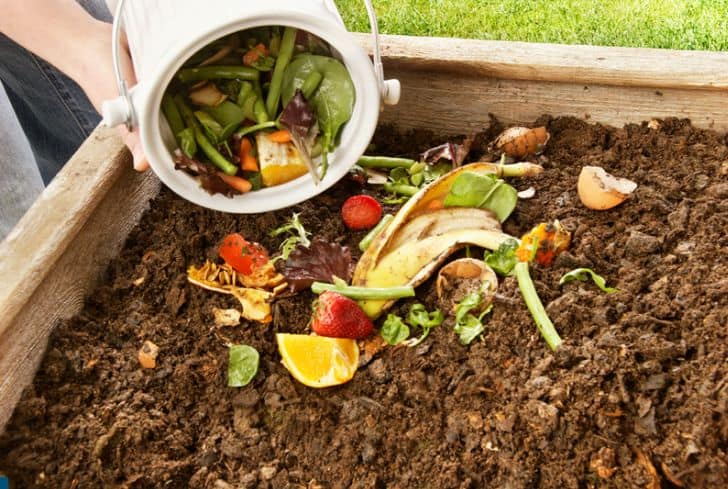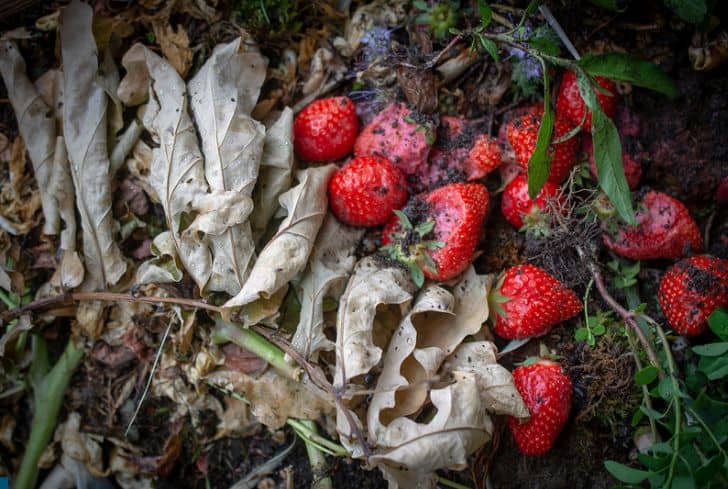Strawberries are among the most common fruits to buy at the supermarket, but growing your own strawberries is extremely delicious if you are a serious gardener. In a compost pile, strawberries will decompose quickly and are a good addition because they will add more nutrients.
The necessity to compost strawberry fruit, however, is a sign that you should think about how to maximize your strawberry production. If you have a surplus, can you put more strawberries and plant them in the compost? Dive in to find out!
Can You Plant Strawberries in Compost?
You can plant strawberries in compost. They decompose rapidly in a compost pile because they are “green,” so if you have a lot to dispose of, mix them in with “browns” to assist them in absorbing and utilizing the extra moisture.
According to some, strawberry plants ought to be replaced if you cultivate them yourself every three years when they start producing less fruit after that. Strawberry plants can be composted, but first, keep in mind peg down, container on, or at the very least, clip off the runners.
These new runners will try to spread out. Therefore, having them replace their parental plant in the strawberry bed is wiser rather than allowing them to settle in your compost pile.
Strawberry plants can help create the compost in the beginning and then be used again for your existing strawberry crop to aid their growth. Compost will help the soil retain more of the nutrients strawberry plants prefer and benefit the plants themselves.
Compost, as opposed to straw, is a better choice for mulch since it has the dual benefits of controlling weeds and, over time, improving the crop by introducing more nutrients to the soil.
Without strawberries, summer would not truly be summer. They are available all year long in stores, but even in season, they rarely taste as wonderful as fruit grown on your property.
Strawberries can be planted in small gardens, on balconies, and even on a windowsill because they thrive in pots, growth bags, window boxes, strawberry planters, and hanging baskets in addition to the ground.
In the summer, you may purchase strawberry plants in pots at the garden center. In the spring or fall, you can obtain runners over the mail.
Benefits of Composting Strawberries
Among the most famous fruits to buy at the shop, strawberries are also delicious when grown at home by a dedicated gardener. However, what are the benefits of composting strawberries? Below are some of them.
Improved Soil Quality
Compost made from strawberries can improve soil quality greatly. This organic material enhances aeration and water retention, which leads to stronger plants that may flourish due to higher moisture and nutritional levels.
These advantages make adding strawberry compost to your soil an affordable option to enhance soil health for your farm or garden.
Balanced pH
Additionally, strawberry compost can be used to change the pH of the soil, which is crucial for the best uptake of vital nutrients. Alkaline soils can have their pH reduced using strawberry compost, which helps to increase the availability of the soil’s nutrients to the plant.
Cost-effective
A more affordable option to conventional chemical fertilizers is strawberry compost. Without the use of synthetic chemicals that may be hazardous to the environment, it is a sustainable and natural technique to enhance soil quality and boost nutrient availability.

How To Compost Strawberries?
A pile can be made quite easily. Gather the items you will need including your strawberries, and stir the mound once a week with a spade or compost mixer. Turn your Tumbler once every day if you have one. Water it if it has dried out.
Either you actively turn the compost to hasten the breakdown process or the material lies there and gradually decomposes. To hasten the process, you may additionally employ some compost starters.
When finished, your compost will be dark, crumbly, and deliciously earthy. You can sift it using a compost shaker to smooth the texture further or leave the larger pieces in the garden beds to continue breaking down.
If you have enough, spread your priceless compost about your vegetable and flower gardens, near the drip line of your shrubs, and on your lawn. When you see the outcomes, you will want to keep producing more.
On a beer budget, compost acts as a bubbly for your garden. Watch your garden flourish as you start a pile!
Can Strawberries Be Buried in the Soil?
If your home does not have a compost pile and you do not desire the strawberries to waste away in the trash, bury them instead. Digging a shallow hole, placing your strawberries inside it, and burying it is an option.
Over time, they will degrade, enhancing the soil’s fertility. The one drawback of doing this is that the procedure of composting will turn anaerobic and produce different by-products than traditional compost heaps if you put them in an area with little oxygen.
Methane is one of the by-products, which is less good for the surroundings than traditional composting. However, if you think of planting a new strawberry by burying old ones, you might need to go about it correctly.
Between the latter part of April and the last week of May, the best time to grow strawberries is towards the start of May. Choose several varieties, such as an early and a late-season grower, to extend the time you may enjoy strawberries.
Having various kinds can lengthen your season and let you enjoy strawberries for an extended amount of time, as strawberries only bear fruit for about two weeks. Before planting, give the strawberry plants a five-minute soak in water.
Plants are typically planted 12 inches apart in growing rows that are 38 to 48 inches apart. Put your trowel deep into the earth while planting strawberry roots, draw it back to make a gap, and then insert the root into it.
Every one of the roots should be buried, but you should take care not to enclose the plant’s crown. If you cannot plant your new plants immediately after bringing them home, keep them in a freezer.
Do Strawberries Like Mushroom Compost?
If the soil is excessively acidic, strawberries prefer compost made from mushrooms. The alkaline properties of mushroom compost will adjust the soil’s acidity to inside the pH range most suited for producing strawberries.
Since strawberry plants can tolerate salt, this element of mushroom compost poses no issues. Although strawberries are relatively simple to cultivate, as with any plant, growing conditions significantly impact the plant’s health as well as the type and amount of fruit it will yield.
Compost for mushrooms is made up of a combination of gypsum, straw, and horse dung. The carbon supply is the straw, and the horse dung provides nitrogen and other healthy nutrients.
Gypsum is given to the soil to improve soil structure and pH levels. There are many advantages to using mushroom compost for strawberries, including better soil quality and enhanced nutrient availability.
The nutrients nitrogen, phosphorus, and potassium, which are crucial for strawberry growth and help improve the soil’s structure so that it can better retain water, are abundant in mushroom compost.
It is advised to add mushroom compost to the soil towards the base of strawberry plants while fertilizing them. Spread the compost evenly, not submerging the plant’s crown.
After adding the compost, it is advised to give the plants plenty of water to help them acclimate to the soil. Every spring, it is advised to add mushroom compost surrounding the bed at an average of 1-2 inches.
In order to keep the soil’s pH values between 6.0 and 6.5 in a favorable range for strawberries, constant monitoring, and adjustments need also be made. Appropriate drainage is crucial to healthy strawberry development in mushroom compost.
Because mushroom compost can retain much water, strawberry plants’ roots could get waterlogged and decay if the soil is not draining well. Making sure the soil is well-aerated and the bed stands to encourage adequate drainage is crucial for ensuring proper drainage.
What Can You Do With Moldy Strawberries?
The U.S. Department of Agriculture warns against eating soft fruits with mold on their surface, such as strawberries, starting with rotten berries. This is because the mold might have easily gotten into the strawberry’s soft skin, where it is invisible.
Additionally, eating moldy food might result in allergic responses and respiratory issues. Does the entire container have to be discarded because you detect a few rotten strawberries? Sometimes.
The moldy strawberries and every other berry that are in direct contact with them should be discarded first. Then carefully inspect the rest of the berries; if there are no signs of mildew and they are not too mushy, you can eat them.
Make sure you first properly wash the strawberries. Adding moldy strawberry fruit to the compost pile is not an issue because that is what takes place in the fruit when it ends up there. Strawberry fruit with mold on it is already and is starting to degrade.
Conclusion
For each food crop, including strawberries, the growing condition is crucial. A compost garden is the perfect place to grow strawberries because it is nutrient-rich. There is no need for additional fertilizers since the compost is incredibly rich.
Black root rot, a disease that may ruin a strawberry harvest, is less likely to affect compost-grown strawberries.






